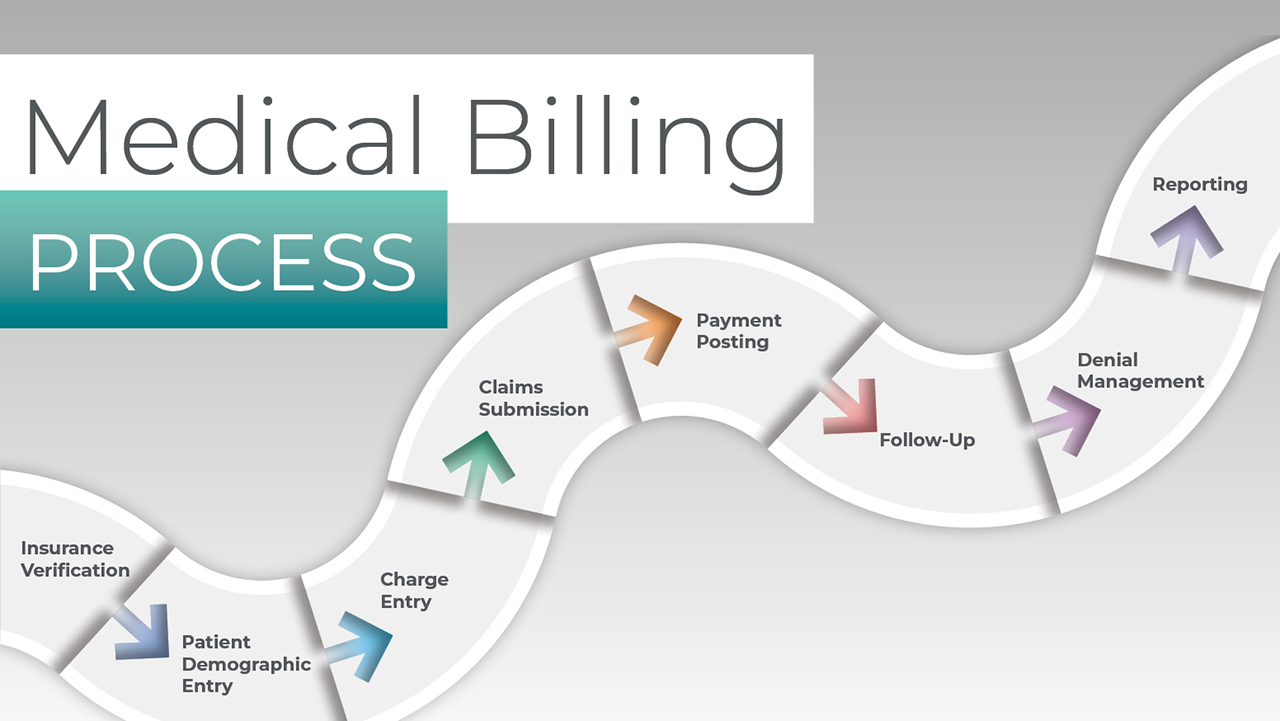

Finance
How To Buy Google Stocks
Published: January 17, 2024
Learn how to buy Google stocks and invest in finance with our comprehensive guide. Take advantage of this opportunity to grow your wealth and secure your financial future.
(Many of the links in this article redirect to a specific reviewed product. Your purchase of these products through affiliate links helps to generate commission for LiveWell, at no extra cost. Learn more)
Table of Contents
Introduction
Investing in stocks can be a lucrative venture, and one company that has captured the attention of many investors is Google. As one of the leading technology giants, Google stocks have consistently shown strong performance, making it an attractive investment option for individuals looking to grow their wealth.
In this comprehensive guide, we will walk you through the steps of buying Google stocks, from conducting thorough research to understanding stock market terminology and placing an order. Whether you are a beginner or an experienced investor, this guide will equip you with the knowledge and tools to make informed decisions and maximize your investment potential.
Before diving into the process of buying Google stocks, it’s important to understand that investing in the stock market carries inherent risks. Stock prices can fluctuate based on various factors such as market conditions, economic news, and company performance. Therefore, it’s crucial to approach stock investing with a long-term perspective and a well-diversified portfolio to mitigate risks.
Now, let’s explore the step-by-step process of buying Google stocks and start your journey towards becoming a shareholder of one of the most influential companies in the world.
Step 1: Researching Google Stocks
Before investing in Google stocks, it’s essential to conduct thorough research to gain a deep understanding of the company, its financials, market trends, and potential risks. Here are some key factors to consider:
- Company Overview: Start by familiarizing yourself with Google’s business model, its products and services, and its competitive advantage. Understanding the company’s core operations will help you gauge its growth prospects and identify any potential risks.
- Financial Performance: Analyze Google’s financial statements, including its income statement, balance sheet, and cash flow statement. Look for consistent revenue growth, profitability, and positive cash flow. Pay attention to key financial ratios, such as earnings per share (EPS) and return on equity (ROE), to assess the company’s financial health.
- Industry Analysis: Assess the trends and dynamics of the technology industry to understand the opportunities and challenges Google may face. Consider factors such as market size, competition, regulatory environment, and potential disruptions that could impact Google’s future growth.
- Market Share and Competition: Research Google’s market share in its core businesses, such as search advertising, cloud computing, and mobile operating systems. Keep an eye on competitors’ performance and their strategies to stay ahead in the market.
- News and Events: Stay updated with the latest news, events, and announcements related to Google. News about product launches, mergers and acquisitions, legal issues, or executive changes can impact the company’s stock price.
- Analyst Recommendations: Take note of analyst recommendations and target price estimates for Google stocks. This information can provide insights into market sentiment and help you gauge the stock’s potential upside.
It’s important to note that researching stocks requires a combination of qualitative and quantitative analysis. While financial data provides insights into the company’s financial health, qualitative factors such as management competence, market positioning, and innovation capabilities are equally crucial.
By conducting thorough research, you can make more informed decisions when it comes to buying Google stocks, setting yourself up for long-term success in the stock market.
Step 2: Choosing a Stock Broker
Once you have thoroughly researched Google stocks, the next step is to choose a stock broker. A stock broker acts as an intermediary between you and the stock market, executing your buy and sell orders. Here are some key factors to consider when selecting a stock broker:
- Regulation and Reputation: It is crucial to choose a stock broker that is regulated by a reputable financial authority. This ensures that your investments are protected and that the broker adheres to strict compliance standards.
- Trading Fees and Commissions: Compare the trading fees and commission rates charged by different brokers. Some brokers charge a flat fee per trade, while others have a percentage-based commission structure. Consider your trading frequency and investment amount to choose a broker that offers competitive pricing.
- Trading Platform: Evaluate the trading platform offered by the broker. A user-friendly and intuitive platform can greatly enhance your trading experience. Look for features such as real-time market data, order execution capabilities, and access to research and analysis tools.
- Account Types: Consider the types of accounts offered by the broker. Most brokers offer individual brokerage accounts, joint accounts, retirement accounts, and custodial accounts for minors. Choose a broker that caters to your specific investment needs.
- Customer Service and Support: Assess the quality of customer service and support provided by the broker. Look for brokers that offer multiple channels of communication, prompt response times, and knowledgeable representatives who can assist you with any queries or issues.
- Additional Services: Some brokers offer additional services such as educational resources, market analysis, and robo-advisory services. These can be valuable tools, especially for beginner investors who are looking for guidance and support.
It’s important to note that different brokers may have different strengths and weaknesses. Consider your investment goals, trading style, and personal preferences when choosing a stock broker. Take the time to compare multiple brokers and read reviews from other investors to make an informed decision.
Once you have chosen a stock broker, you can proceed to the next step, which is opening a trading account.
Step 3: Opening a Trading Account
After selecting a stock broker, the next step is to open a trading account. A trading account allows you to buy and sell stocks in the stock market. Here’s how you can open a trading account:
- Choose the Type of Account: Determine the type of trading account you want to open. Most brokers offer individual brokerage accounts, which are suitable for individual investors. If you are opening an account with a specific purpose, such as a retirement account, make sure to choose the appropriate account type.
- Provide Personal Information: Fill out the account opening form provided by the broker. This form will typically require personal information, such as your name, address, date of birth, and contact details. You may also be required to provide identification documents, such as a copy of your passport or driver’s license, to verify your identity.
- Read and Agree to the Terms and Conditions: Carefully read the terms and conditions provided by the broker. These terms outline the rights and obligations of both you and the broker. Make sure you understand the terms before agreeing to them.
- Submit the Application: Once you have completed the account opening form and agreed to the terms and conditions, submit your application. Some brokers allow you to apply online, while others may require you to visit a branch office or mail in the application.
- Fund Your Account: After your account is successfully opened, you will receive instructions on how to fund your trading account. Most brokers offer various funding methods, such as bank transfers or online payment platforms. Transfer the desired amount of funds to your trading account to start trading.
It’s important to note that the account opening process may vary slightly depending on the broker you choose. Some brokers may require additional documentation or have specific account opening requirements. Follow the instructions provided by your chosen broker to ensure a smooth account opening process.
Once your trading account is funded, you are ready to move on to the next step, which is understanding stock market terminology.
Step 4: Understanding Stock Market Terminology
Before you start buying Google stocks, it’s important to familiarize yourself with key stock market terminology. Understanding these terms will help you navigate the stock market with confidence and make informed investment decisions. Here are some essential stock market terms:
- Shares: A share represents a unit of ownership in a company. When you buy Google stocks, you are buying shares of the company.
- Stock Exchange: A stock exchange is a platform where buyers and sellers trade stocks. The most well-known stock exchanges include the New York Stock Exchange (NYSE) and NASDAQ.
- Ticker Symbol: A ticker symbol is a unique combination of letters assigned to a publicly traded company. Google’s ticker symbol is “GOOGL” on the NASDAQ exchange.
- Market Order: A market order is an instruction to buy or sell a stock at the current market price. It is executed immediately at the prevailing market conditions.
- Limit Order: A limit order allows you to set a specific price at which you are willing to buy or sell a stock. The order is executed only if the stock reaches your specified price or better.
- Bid and Ask: The bid price is the highest price a buyer is willing to pay for a stock, while the ask price is the lowest price a seller is willing to accept. The difference between the bid and ask prices is called the spread.
- Volatility: Volatility refers to the degree of price fluctuations in a stock. Highly volatile stocks have larger price swings, while low-volatility stocks have more stable price movements.
- Diversification: Diversification is the strategy of spreading your investments across different stocks, sectors, and asset classes to reduce risk. By diversifying your portfolio, you can potentially mitigate the impact of individual stock price movements.
- Dividend: A dividend is a portion of a company’s profits distributed to its shareholders. Google does not currently pay dividends, but understanding dividends is important when investing in other stocks.
- Market Capitalization: Market capitalization, or market cap, is the total value of a company’s outstanding shares. It is calculated by multiplying the current stock price by the number of outstanding shares.
These are just a few of the many terms used in the stock market. Take the time to educate yourself on additional terminology as you continue your investing journey. Understanding these terms will empower you to make more informed decisions and communicate effectively with your stockbroker.
Now that you have a grasp of the stock market terminology, let’s move on to the next step, placing an order to buy Google stocks.
Step 5: Placing an Order to Buy Google Stocks
Once you have conducted thorough research, chosen a stock broker, opened a trading account, and familiarized yourself with stock market terminology, you are ready to place an order to buy Google stocks. Here’s how you can do it:
- Log in to Your Trading Account: Access your trading account using the credentials provided by your stock broker. Ensure that you have sufficient funds in your account to cover the cost of purchasing Google stocks.
- Search for the Ticker Symbol: Use the search function on your trading platform to find Google’s ticker symbol, which is “GOOGL” for the NASDAQ exchange. This will take you to the stock’s trading page.
- Select the Order Type: Choose the type of order you want to place. A market order will be executed at the prevailing market price, while a limit order allows you to set a specific price at which you are willing to buy the stock.
- Specify the Quantity: Enter the number of shares you want to buy. Consider factors such as your available funds, your desired investment amount, and your investment objectives. Ensure that you have enough buying power to execute the order.
- Review and Confirm: Double-check all the details of your order, including the ticker symbol, order type, quantity, and any additional instructions. Make sure everything is accurate before clicking the “confirm” or “submit” button to place the order.
- Monitor Your Order: Once the order is placed, monitor its progress. You can view the status of your order, including whether it is executed, partially executed, or pending. Keep an eye on the stock price to see if it meets your desired entry point.
- Set Up Alerts: Consider setting up price alerts or notifications on your trading platform. This will notify you when Google’s stock price reaches a certain level, allowing you to take action accordingly.
- Stay Informed: Continue to stay informed about Google’s performance, news, and market trends. Regularly review your portfolio and make adjustments as necessary to align with your investment goals.
It’s important to note that stock prices are subject to market fluctuations, and there is no guarantee that your order will be executed at your desired price. Additionally, keep in mind that brokerage fees and commissions may be charged for each executed order.
By following these steps, you can confidently place an order to buy Google stocks, positioning yourself as a shareholder in the renowned technology company.
Now that you have successfully purchased Google stocks, let’s move on to the final step, monitoring and managing your portfolio.
Step 6: Monitoring and Managing Your Google Stock Portfolio
After buying Google stocks, it’s crucial to actively monitor and manage your stock portfolio to ensure it aligns with your investment goals. Here are some key steps to help you effectively manage your Google stock holdings:
- Regularly Review Stock Performance: Keep track of Google’s stock performance by monitoring its price movements, as well as any news or events that may impact the company. Regularly review your portfolio to assess how Google’s stock is performing relative to your expectations and the broader market.
- Stay Informed: Stay updated on the latest industry trends and news related to Google. News about product launches, strategic partnerships, regulatory changes, or financial results can significantly impact the stock’s performance. Use reliable news sources and official company announcements to stay informed.
- Set Performance Goals: Set clear performance goals for your Google stock holdings. Determine a target price or a desired percentage return on your investment. Regularly review your progress towards these goals and make adjustments to your investment strategy if needed.
- Consider Rebalancing: Periodically review your overall investment portfolio and consider rebalancing if necessary. If the allocation of your portfolio becomes imbalanced due to changes in stock prices, consider selling or buying additional shares of Google or other investments to restore your desired asset allocation.
- Dividend Reinvestment: Although Google does not currently pay dividends, if the company starts paying dividends in the future, consider reinvesting those dividends to purchase additional shares. This can help compound your investment growth over time.
- Implement Stop-Loss Orders: To protect your investment from significant losses, consider implementing stop-loss orders. These orders automatically sell your Google stocks if the price drops below a predetermined level, helping to limit potential losses.
- Seek Professional Advice, if necessary: Depending on your investment knowledge and experience, you may consider seeking advice from financial professionals or investment advisors. They can provide personalized guidance and assist you in making informed decisions regarding your Google stock holdings.
Remember, investing in stocks involves risks, and the value of your investments can fluctuate. It’s important to have a long-term perspective and not react impulsively to short-term market fluctuations. Regularly assess your investment goals and risk tolerance to ensure your Google stock holdings align with your overall investment strategy.
By effectively monitoring and managing your Google stock portfolio, you can maximize the potential returns and make adjustments as needed to ensure your investment remains aligned with your objectives.
Congratulations! You have completed all the steps to buy Google stocks and manage your investment. Remember to continuously educate yourself about the stock market, stay informed, and make informed decisions based on your investment goals and risk tolerance.
Disclaimer: The information provided in this article is for informational purposes only and should not be construed as financial or investment advice. Always do your own research and consult with a qualified financial advisor before making any investment decisions.
Conclusion
Investing in Google stocks can be a rewarding opportunity for individuals looking to grow their wealth in the stock market. By following the step-by-step guide outlined in this article, you have gained the knowledge and tools to navigate the process of buying Google stocks with confidence.
We started by emphasizing the importance of conducting thorough research on Google as a company and understanding the stock market. This knowledge empowers you to make informed decisions and assess the growth potential and risks associated with investing in Google.
Next, we discussed the significance of choosing a reputable stock broker that aligns with your investment needs. Opening a trading account with a reliable broker sets the foundation for executing your orders to buy Google stocks.
We then delved into understanding key stock market terminology, which is essential for effective communication with your broker and understanding market dynamics. Familiarizing yourself with terms such as shares, ticker symbol, market order, and limit order enhances your ability to navigate the stock market confidently.
Placing an order to buy Google stocks is the next crucial step. Whether you choose a market order or a limit order, understanding the process ensures a seamless execution and entry into the stock market.
Once you have acquired Google stocks, it’s important to actively manage and monitor your portfolio. Regularly reviewing stock performance, staying informed, and making adjustments to your investment strategy as necessary will help you optimize your returns and align your portfolio with your goals.
In conclusion, buying Google stocks requires research, careful decision-making, and ongoing portfolio management. Always keep in mind that investing in stocks carries risks and it’s essential to diversify your investments and seek professional advice if needed.
Now that you are equipped with the knowledge and steps outlined in this guide, take the leap and begin your journey as a Google stock investor. With dedication, patience, and continuous learning, you have the potential to achieve your investment goals and unlock the benefits of being a shareholder in one of the world’s leading technology companies.














